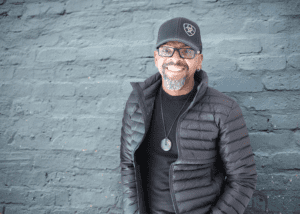Take our quiz to see therapists who are a good match for you.
Take our quiz to see therapists who are a good match for you.
How do you share the story of pain?
How do I tell a story of trauma when so many people have been hurt in the world? One of the first lessons I learned growing up was the role conditioning played in causing me to discount or bury my experiences. Quick-witted and passionate, I understood the behaviors I witnessed with my parents. However, I did not have the words or sophistication to describe what I saw: unhappiness, relationship, and sexual trauma, verbal and physical abuse. I saw the immense pressure my parents, family, and friends were under to live the lives they wanted to live. I cried in silence a great deal back then. I cried because I saw their pain as it was projected onto me.
At what time do parents finally learn their behavior is traumatic to their children? Children are unique people with different dreams and plans for life. Indeed, parents understand this when they unconsciously force their children into activities they could never participate in or succeed in. Sadness is not in harmony with children. You can see it in their spirit. Children are meant to laugh, play, and maintain their connection to God, or the Source of all things. You have to hurt a child to destroy the spirit of laughter while replacing it with anxiety, depression, abandonment, and trauma.
When I began cracking molars, I knew then my anger had the roots to support the growth of Redwood trees. She was a gifted learner and tops in her graduating class, but my mother was prevented from pursuing the dream she loved. Instead, she was forced to accept marriage as an option, which led to her experience of repeated abuse. My mother had a different plan for her life. Her struggles would impact me, as well as her unresolved anger.
Pain, like the thorns of a cactus, brings a specific awareness to our thinking. It took one fight in junior high school for me to learn that fighting does not mix well with my temperament and the unresolved anger I had yet to express. I had to learn how to transmute anger by giving it a voice. I took action to help myself, but I required more assistance than I could write down to reach where I am today.
You could say the path that led me to become a Ph.D. candidate, licensed clinician, therapist, life coach, and medicine man (for those who desire Indigenous Knowledge Systems) was in the stars. My life journey is the process that sharpened my desire to support others. There were so many dynamics happening in my life it was impossible to place them into one category, yet deep listening with a genuine desire to support my growth and healing proved to be the elixir for me.
My journey would lead me away from categorizing my work, which requires flow and adaptability to support such diversity in the clients. No two people experience anxiety or any emotional or psychological dis-ease the same. Although I have training and experience with different modalities, the key is not the methodology but the relationship between the client, coach, or therapist. We are born with a dream of life, a goal, or some desire we wish to pursue. Trauma, in any form, disrupts that vision of happiness, belonging, or self-concept, leading to struggles in life fulfillment and relationships that, in many cases, reinforce earlier trauma in our lives. My greatest gift is the ability to help clients move beyond the limitations of their lives brought about by fear, anxiety, depression, and feelings of self-worth into richer self-expressions that represent the lives they desire to live.
–Greg McNeil, M.A., LPCC
